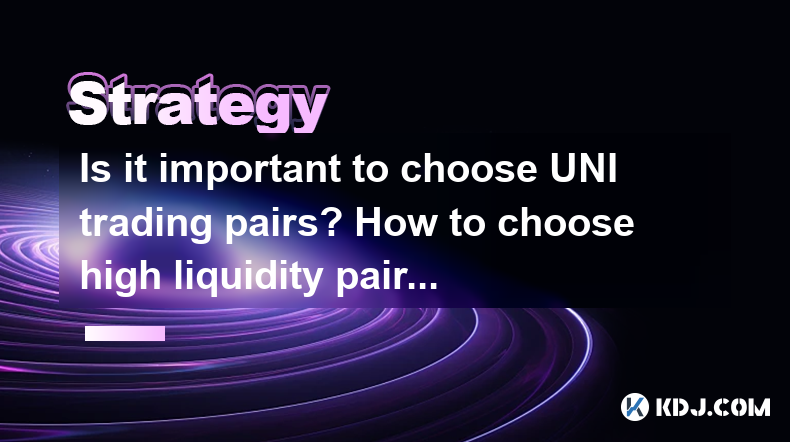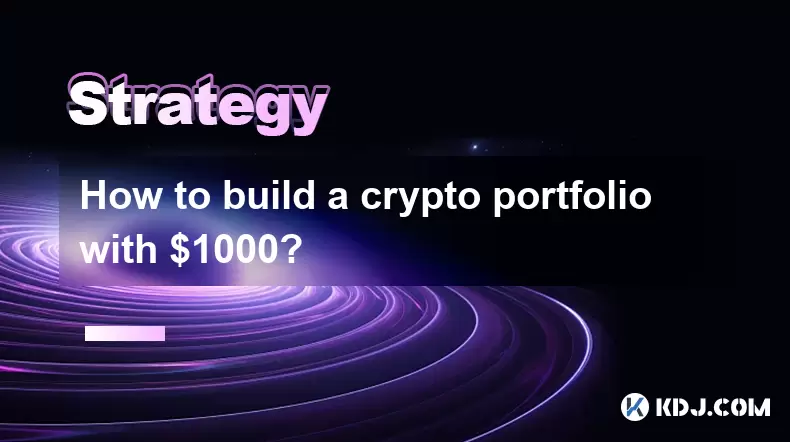-
 Bitcoin
Bitcoin $114400
1.32% -
 Ethereum
Ethereum $3499
2.20% -
 XRP
XRP $2.922
4.26% -
 Tether USDt
Tether USDt $0.0000
0.03% -
 BNB
BNB $752.6
1.53% -
 Solana
Solana $161.8
1.64% -
 USDC
USDC $0.9999
0.01% -
 TRON
TRON $0.3267
1.32% -
 Dogecoin
Dogecoin $0.1991
3.02% -
 Cardano
Cardano $0.7251
3.29% -
 Hyperliquid
Hyperliquid $38.32
3.36% -
 Stellar
Stellar $0.3972
7.58% -
 Sui
Sui $3.437
2.74% -
 Chainlink
Chainlink $16.29
3.65% -
 Bitcoin Cash
Bitcoin Cash $545.3
3.70% -
 Hedera
Hedera $0.2482
7.49% -
 Ethena USDe
Ethena USDe $1.001
0.03% -
 Avalanche
Avalanche $21.40
2.02% -
 Toncoin
Toncoin $3.579
1.56% -
 Litecoin
Litecoin $109.3
2.20% -
 UNUS SED LEO
UNUS SED LEO $8.951
-0.18% -
 Shiba Inu
Shiba Inu $0.00001220
2.75% -
 Polkadot
Polkadot $3.613
2.99% -
 Uniswap
Uniswap $9.173
3.78% -
 Monero
Monero $302.6
2.62% -
 Dai
Dai $0.0000
0.00% -
 Bitget Token
Bitget Token $4.320
1.52% -
 Pepe
Pepe $0.00001048
3.40% -
 Cronos
Cronos $0.1314
4.33% -
 Aave
Aave $259.4
3.54%
Is it important to choose UNI trading pairs? How to choose high liquidity pairs
Choose UNI trading pairs on Uniswap by evaluating liquidity, fees, volatility, and token utility for an optimized trading experience.
Apr 29, 2025 at 10:01 pm

Understanding UNI Trading Pairs
When engaging with the cryptocurrency market, particularly on decentralized exchanges like Uniswap, choosing the right trading pairs is crucial for maximizing efficiency and minimizing costs. UNI trading pairs refer to the combinations of cryptocurrencies that can be traded against each other on the Uniswap platform. For instance, trading Ethereum (ETH) for Uniswap's native token (UNI) would involve the ETH/UNI pair. The importance of selecting appropriate trading pairs cannot be overstated, as it directly impacts liquidity, trading fees, and overall trading experience.
The Importance of Liquidity in Trading Pairs
Liquidity is a key factor to consider when selecting UNI trading pairs. High liquidity means there is a large volume of orders, which typically results in tighter spreads and less slippage. Slippage occurs when there is a difference between the expected price of a trade and the price at which the trade is executed. High liquidity pairs on Uniswap can help traders execute larger orders without significantly affecting the market price, thus providing a smoother trading experience.
How to Identify High Liquidity Pairs
To identify high liquidity pairs, traders can follow these steps:
- Check the Total Value Locked (TVL): High TVL often indicates a pair with significant liquidity. You can find this information on Uniswap's website or through third-party analytics platforms.
- Analyze Trading Volume: Look at the 24-hour trading volume of the pair. Higher volumes generally mean more liquidity.
- Use Liquidity Pool Data: Examine the liquidity pools associated with the pair. Larger pools suggest better liquidity.
- Monitor Slippage Rates: Use Uniswap's interface to simulate trades and observe the slippage rates. Lower slippage indicates higher liquidity.
Factors to Consider Beyond Liquidity
While liquidity is paramount, other factors should also influence your choice of UNI trading pairs:
- Trading Fees: Different pairs may have varying fee structures. It's essential to consider the fees you'll incur, as they can impact your overall profitability.
- Volatility: Some pairs may be more volatile than others. Depending on your risk tolerance, you might prefer pairs with lower volatility.
- Token Utility: Consider the utility of the tokens in the pair. Tokens with strong use cases and community support may offer better long-term value.
Practical Steps to Choose UNI Trading Pairs
Here’s a detailed guide on how to choose UNI trading pairs:
- Research and List Potential Pairs: Start by listing potential pairs you are interested in. This could include popular pairs like ETH/UNI or less common ones like USDC/UNI.
- Evaluate Liquidity: Use the methods described above to assess the liquidity of each pair on your list. Focus on pairs with high TVL, trading volume, and low slippage.
- Compare Fees: Check the trading fees for each pair. Uniswap typically charges a 0.3% fee per trade, but this can vary depending on the specific pair and network conditions.
- Assess Volatility: Use historical data to evaluate the volatility of the pairs. Tools like CoinGecko or CoinMarketCap can provide this information.
- Consider Token Utility: Research the underlying tokens' use cases and community support. Tokens with strong fundamentals are generally safer bets.
- Final Selection: Based on your research, narrow down your list to the pairs that best meet your criteria for liquidity, fees, volatility, and token utility.
Using Uniswap Interface to Trade Selected Pairs
Once you've chosen your UNI trading pairs, here's how to use the Uniswap interface to trade them:
- Connect Your Wallet: Navigate to the Uniswap website and connect your Ethereum-compatible wallet, such as MetaMask.
- Select the Trading Pair: Choose the trading pair you want to trade from the dropdown menu. For example, if you want to trade ETH for UNI, select the ETH/UNI pair.
- Enter the Amount: Input the amount of the token you want to swap. The interface will automatically calculate the amount of the other token you'll receive.
- Review the Transaction: Check the estimated slippage and the transaction fee. Ensure these are acceptable to you.
- Confirm the Trade: Click on "Swap" and confirm the transaction in your wallet. Wait for the transaction to be processed on the Ethereum network.
Frequently Asked Questions
Q: Can the liquidity of a trading pair change over time?
A: Yes, the liquidity of a trading pair can fluctuate based on market conditions, changes in trading volume, and the overall interest in the tokens involved. It's important to regularly monitor the liquidity of your chosen pairs.
Q: Are there any tools to help automate the selection of high liquidity pairs?
A: Yes, several third-party platforms and tools offer automated analysis of trading pairs on Uniswap. These tools can help you identify high liquidity pairs by analyzing data in real-time.
Q: How does the choice of trading pair affect my tax obligations?
A: The choice of trading pair can impact your tax obligations, as different tokens may be classified differently for tax purposes. It's advisable to consult with a tax professional to understand how your trading activities will be taxed.
Q: Can I trade UNI pairs on other decentralized exchanges besides Uniswap?
A: Yes, UNI can be traded on other decentralized exchanges like SushiSwap or Balancer. Each platform may offer different pairs and liquidity conditions, so it's worth exploring multiple options to find the best fit for your trading needs.
Disclaimer:info@kdj.com
The information provided is not trading advice. kdj.com does not assume any responsibility for any investments made based on the information provided in this article. Cryptocurrencies are highly volatile and it is highly recommended that you invest with caution after thorough research!
If you believe that the content used on this website infringes your copyright, please contact us immediately (info@kdj.com) and we will delete it promptly.
- BCUT: Support Holds, Accumulation Hints at Potential Reversal
- 2025-08-04 10:50:12
- Bitcoin's Bullish Expansion: Decoding Bollinger Bands and Whale Bets
- 2025-08-04 10:55:12
- XRP, Solana, and Whales: Decoding the Crypto Tides
- 2025-08-04 11:10:11
- BlockDAG's Grand Finale: Auction Fever and the Dawn of a New Era
- 2025-08-04 10:30:12
- Kaia Files: Will South Korea Embrace a KRW-Pegged Stablecoin?
- 2025-08-04 10:30:12
- Kaspa, HBAR, and Cold Wallet: A New York Minute on Crypto's Latest Moves
- 2025-08-04 09:11:54
Related knowledge

How to avoid common crypto investment mistakes?
Jul 13,2025 at 01:35am
Understanding the Risks of Crypto InvestmentInvesting in cryptocurrency can be highly rewarding, but it also comes with significant risks. One of the ...

What is a long-short crypto strategy?
Jul 15,2025 at 10:56am
Understanding the Basics of a Long-Short Crypto StrategyA long-short crypto strategy is an investment approach where traders simultaneously take long ...

What is a long-short crypto strategy?
Jul 11,2025 at 01:28pm
Understanding the Basics of Long-Short Crypto StrategyA long-short crypto strategy is an investment approach where traders take both long and short po...

How to use the RSI indicator for crypto?
Jul 12,2025 at 03:56pm
Understanding the RSI Indicator in Cryptocurrency TradingThe Relative Strength Index (RSI) is a momentum oscillator used to measure the speed and chan...

Is copy trading a good strategy for crypto beginners?
Jul 12,2025 at 08:28am
Understanding Copy Trading in the Cryptocurrency MarketCopy trading is a strategy where novice traders replicate the trades of experienced investors a...

How to build a crypto portfolio with $1000?
Jul 13,2025 at 08:14pm
Understanding the Basics of Cryptocurrency InvestmentBuilding a crypto portfolio with $1000 starts with understanding the fundamentals of cryptocurren...

How to avoid common crypto investment mistakes?
Jul 13,2025 at 01:35am
Understanding the Risks of Crypto InvestmentInvesting in cryptocurrency can be highly rewarding, but it also comes with significant risks. One of the ...

What is a long-short crypto strategy?
Jul 15,2025 at 10:56am
Understanding the Basics of a Long-Short Crypto StrategyA long-short crypto strategy is an investment approach where traders simultaneously take long ...

What is a long-short crypto strategy?
Jul 11,2025 at 01:28pm
Understanding the Basics of Long-Short Crypto StrategyA long-short crypto strategy is an investment approach where traders take both long and short po...

How to use the RSI indicator for crypto?
Jul 12,2025 at 03:56pm
Understanding the RSI Indicator in Cryptocurrency TradingThe Relative Strength Index (RSI) is a momentum oscillator used to measure the speed and chan...

Is copy trading a good strategy for crypto beginners?
Jul 12,2025 at 08:28am
Understanding Copy Trading in the Cryptocurrency MarketCopy trading is a strategy where novice traders replicate the trades of experienced investors a...

How to build a crypto portfolio with $1000?
Jul 13,2025 at 08:14pm
Understanding the Basics of Cryptocurrency InvestmentBuilding a crypto portfolio with $1000 starts with understanding the fundamentals of cryptocurren...
See all articles

























































































